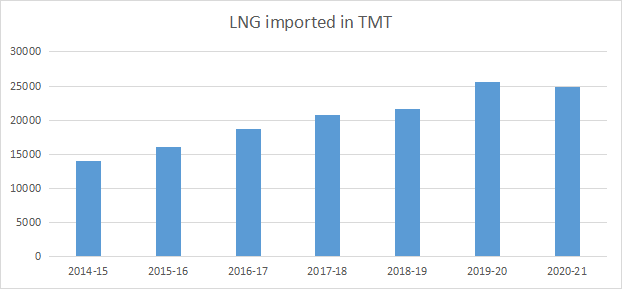LNG Storage and Transportation
Natural gas in the form of LNG offers remarkable flexibility in storage and transportation. On land, natural gas is conveniently delivered to consumption centers in its gaseous form through pipelines. But if pipeline transportation is not an option available, natural gas is converted and stored as Liquefied Natural Gas (LNG) at minus 162 degrees Celsius, by cooling it down using a refrigeration cycle. At this super-cool temperature, natural gas turns into its liquid form. The resulting LNG occupies only 1/600th of its original gaseous volume and is thus transported efficiently in large specialized tanker ships that have the requisite onboard cryogenic storage facilities (thermally insulated tanks) to keep LNG in liquid form.
Upon arrival at an LNG import terminal, LNG is regassified by heating it to convert it back into its gaseous form, which is called R-LNG (regassified LNG). This natural gas regenerated from LNG is transported swiftly via pipeline networks stretching thousands of kilometers. LNG can also be delivered employing LNG trucks with double-walled insulated cryogenic tanks to store LNG at ultra-low temperatures.
Similarly, on-ground LNG storage tanks are specially designed cryogenic tanks that maintain frigid conditions to keep LNG in the liquid state. These tank systems are specially engineered to use auto-refrigeration to keep the pressure and the temperature in the tank constant.
India’s LNG Imports (2012 to 2021)

Source: Indian Petroleum & Natural Gas Statistics, MOPNG (2020-21)
Many nations have come to rely on LNG for a significant portion of their energy needs. China is the largest Importer of LNG in the world. China, Japan, South Korea, Taiwan and India are respectively the top five importers of LNG (2021 data).
To view Details of LNG terminals, click here